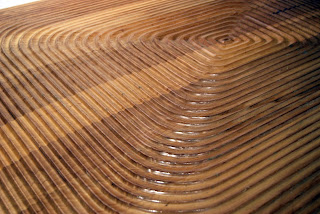Hearing the name ”Waikiki Band” might bring up colorful
images of hoola-hoola skirts, dormant volcanoes that might start spewing lava
in any second, and ukulele-players performing their own
version of “Somewhere over the rainbow”. Well, don’t judge a book by its name.
Waikiki Brothers is both a
band and a movie. Actually, many Koreans know the movie but do not know that
there is still an active band with the same name. The band is led by professional
guitarist Hun Choi with a career of over 35 years as a guitarist. When he does
not perform or produce music, he also helps up and coming amateur bands by rearranging
difficult music pieces to better suit the skills of particular bands. Sometimes
he even joins them for the occasional, spontaneous performance.
The particular performance I
visited was a very well-prepared part of a concert series spanning about one
month. Arranged by Emu Artspace, in cooperation with National Geographic, this
concert series is called “회식” (“Afterwork”) and encourages
people who work in the Gwanghwamun area to enjoy a relaxed evening with their coworkers
without falling into the mainstream trap of “dinner – drinking place – karaoke room”.
Hun Choi
is reaching his late 50s but his vitality on stage easily compares to anyone 20
or 30 years younger than him. The band played a repertoire of Creedence
Clearwater Revival, Eagles, Carlos Santana, Dire Straits, some Korean songs and
much more. Hun Choi on acoustic and electric guitar, accompanied by four other
band members on keyboard, drums, bass and acoustic guitar, the band really
brought the basement location to the roof with their energy.
As a
non-Korean who has basically zero interest in Korean stars and K-pop, it is
always encouraging to see that Korea actually still has artists who play music
that forms an alternative to the constant K-pop being blasted in restaurants
and make-up stores. The building has a concert venue in the basement, a
Mediterranean restaurant on the first floor, and a movie theatre on the second
floor. It’s nestled in the area between Gyeongbokkgung station and Gwanghwamun
station, just behind Seoul Museum of History.
Future
dates: August 24 and August 31
Price:
50,000W (includes dinner and one drink)
Max.
capacity: 100 people
Tickets:
ticket.interpark.com
Tel:
02-730-5604
Facebook:
https://www.facebook.com/emuartspace/

































































